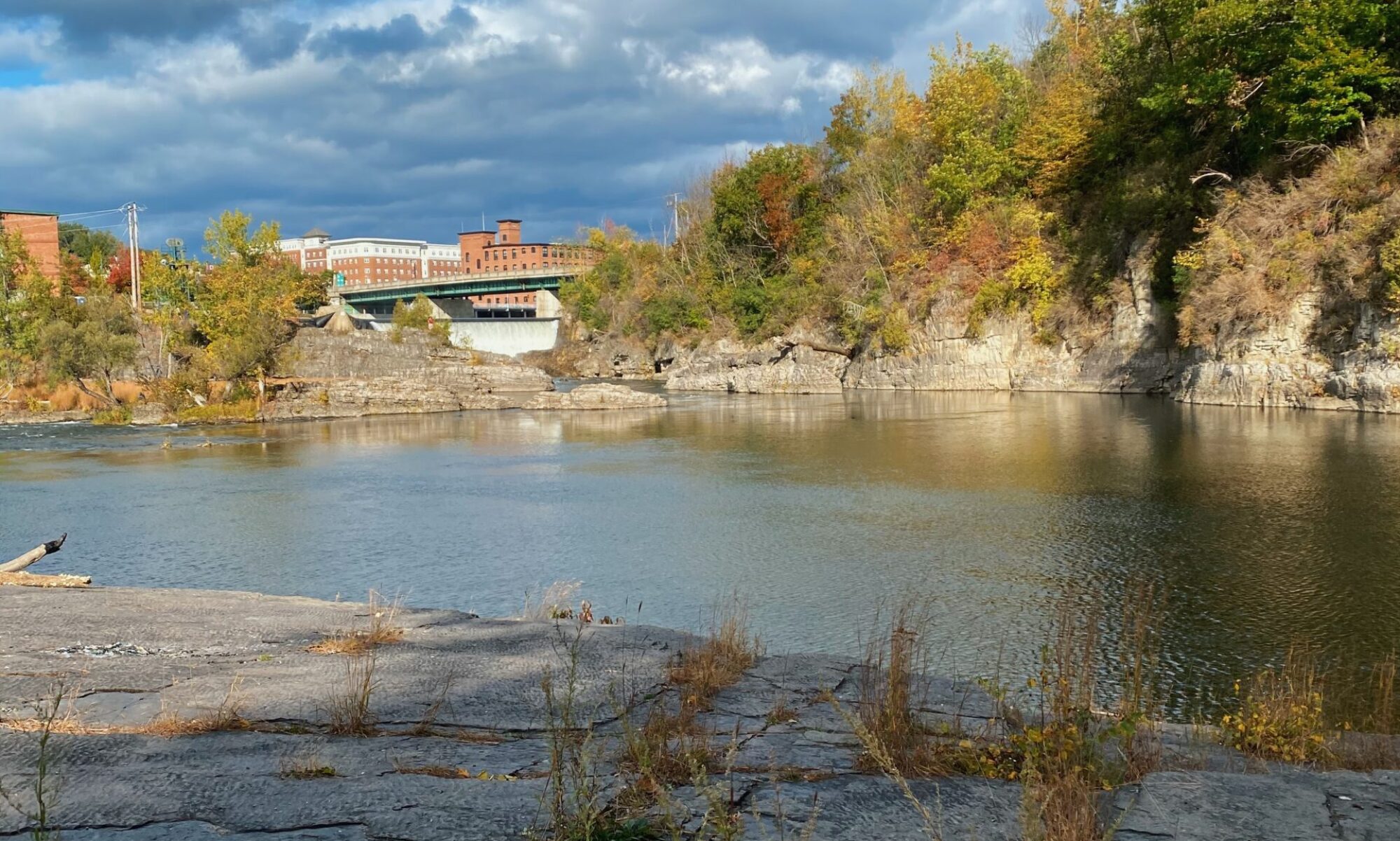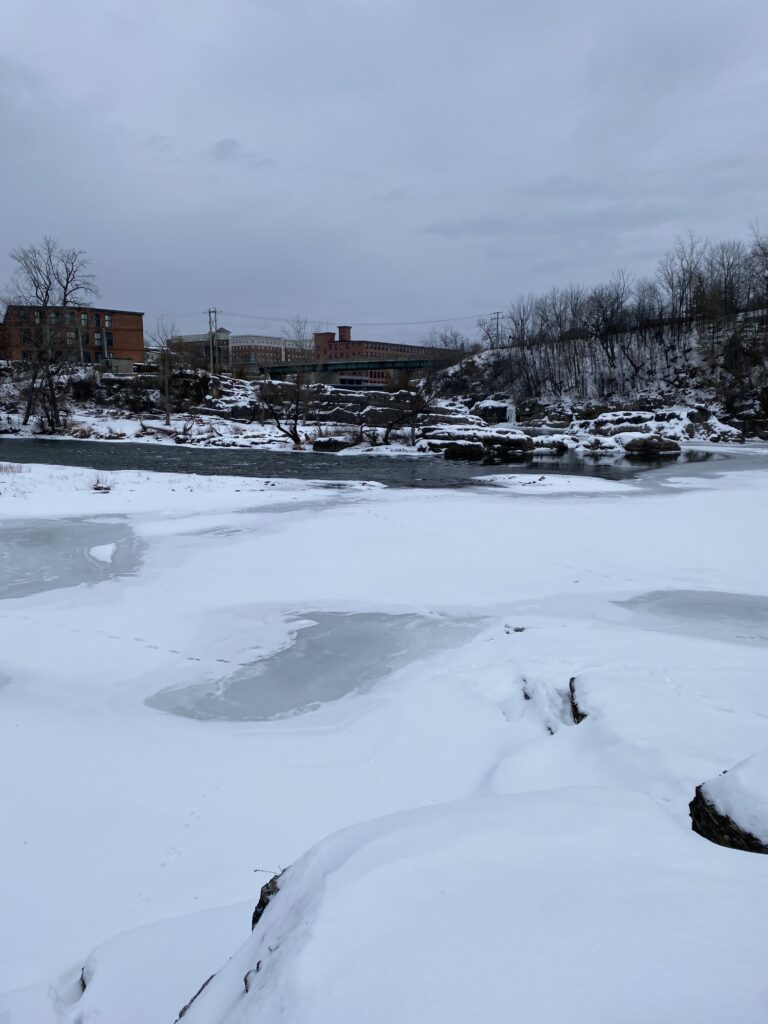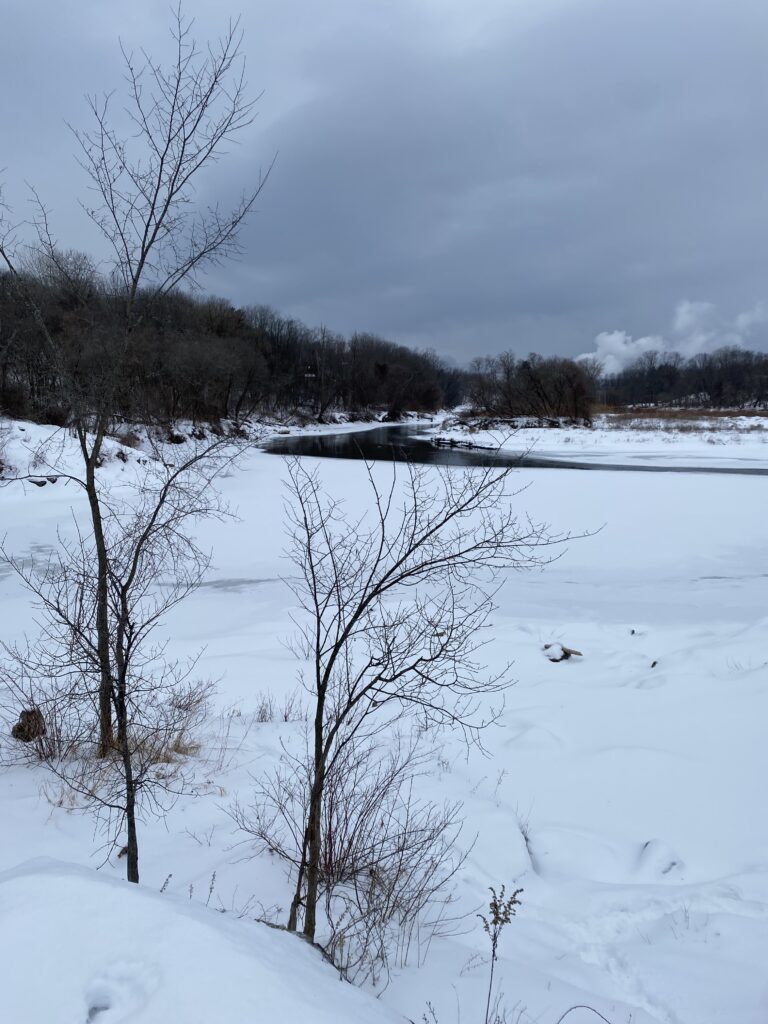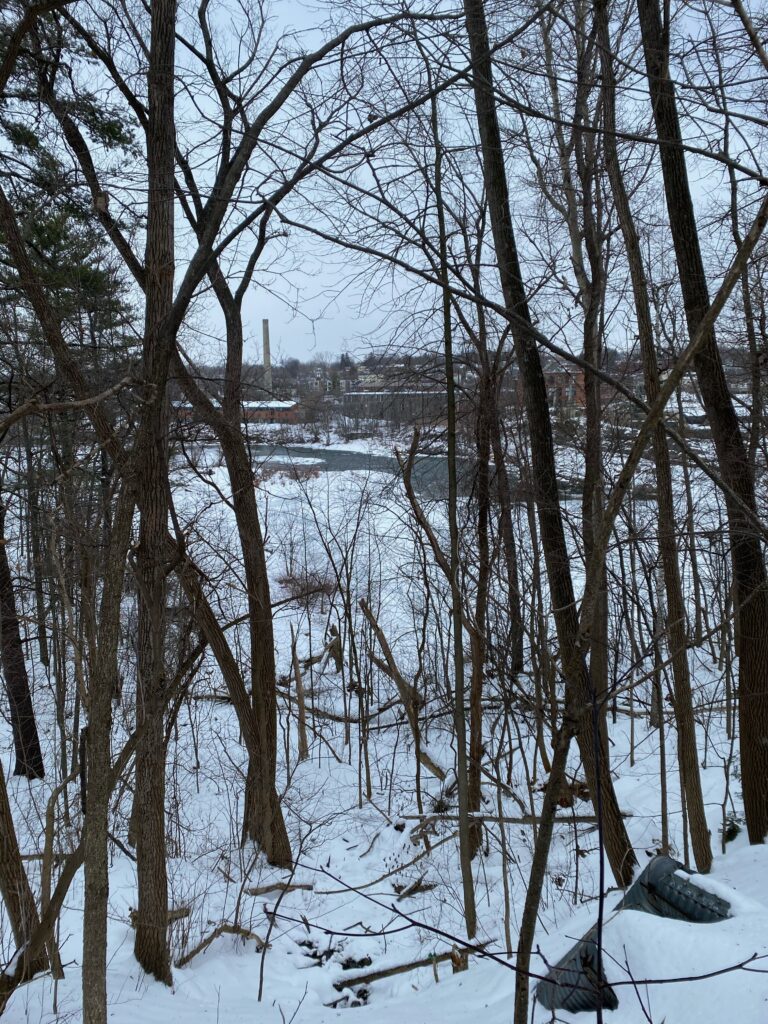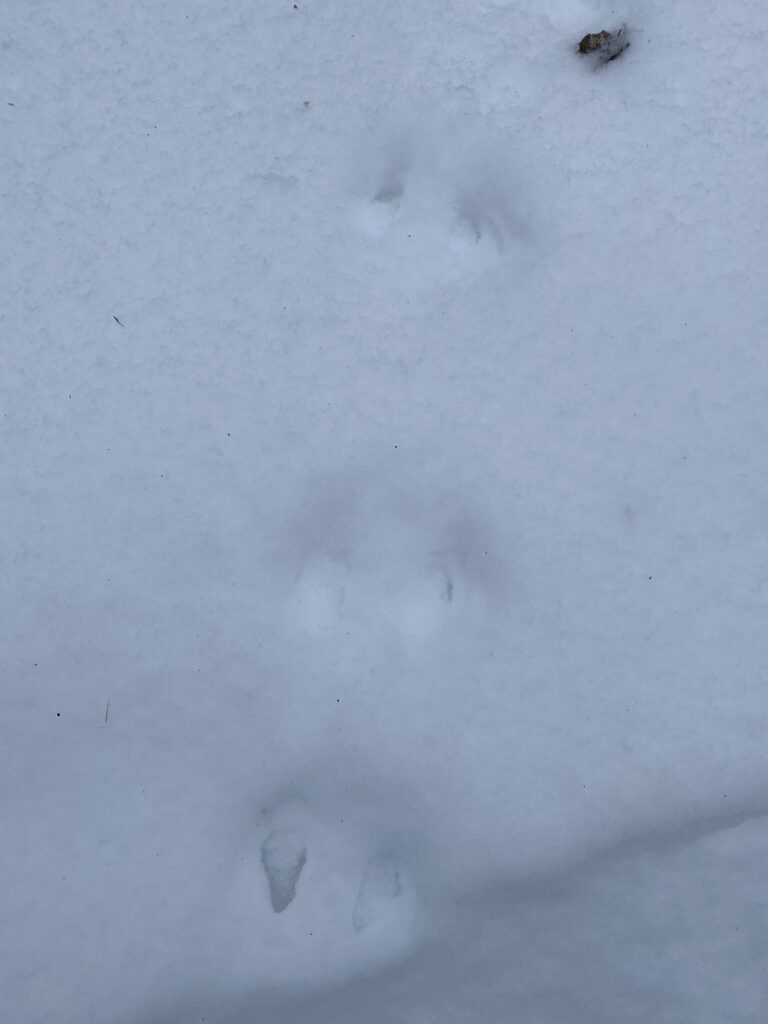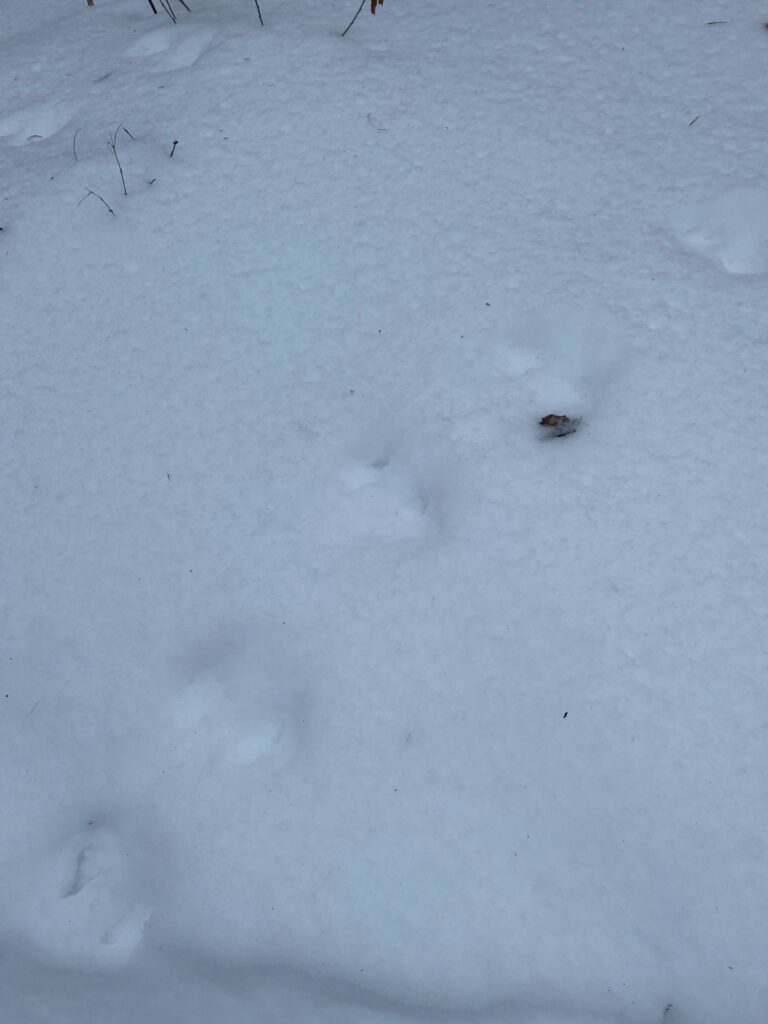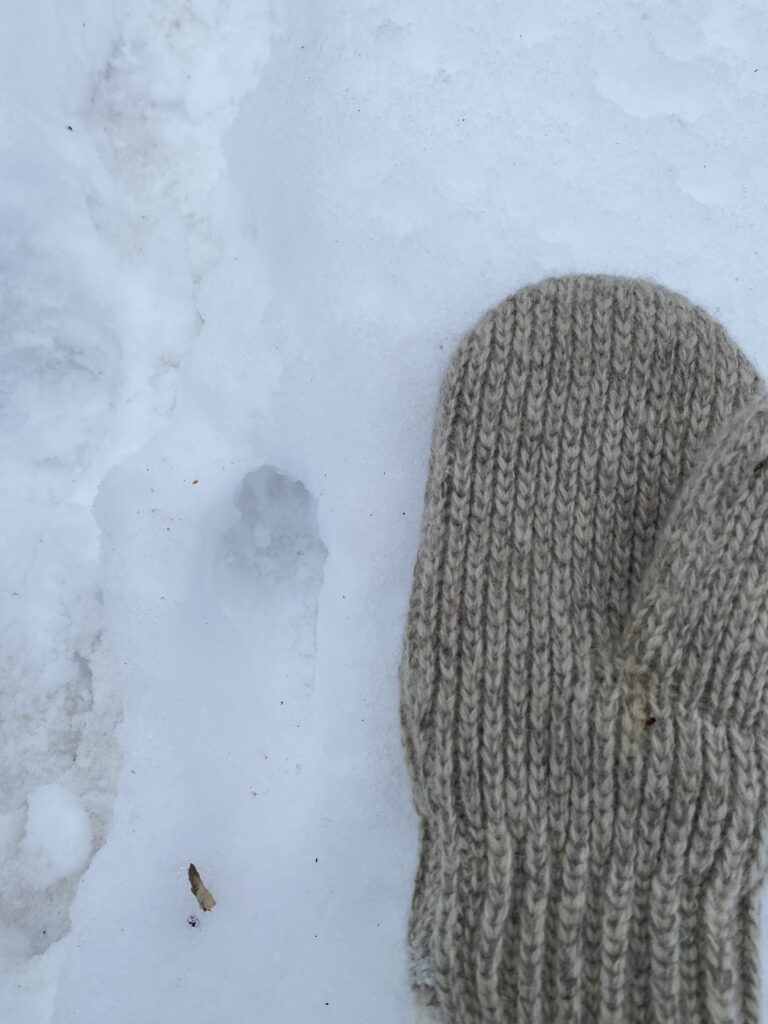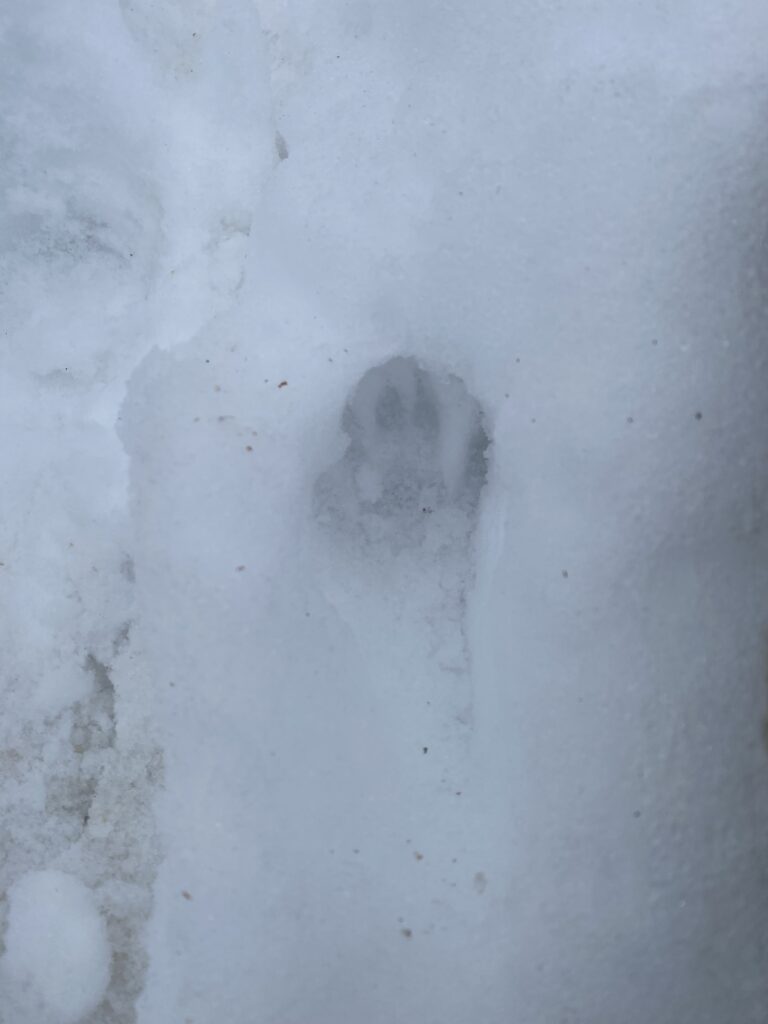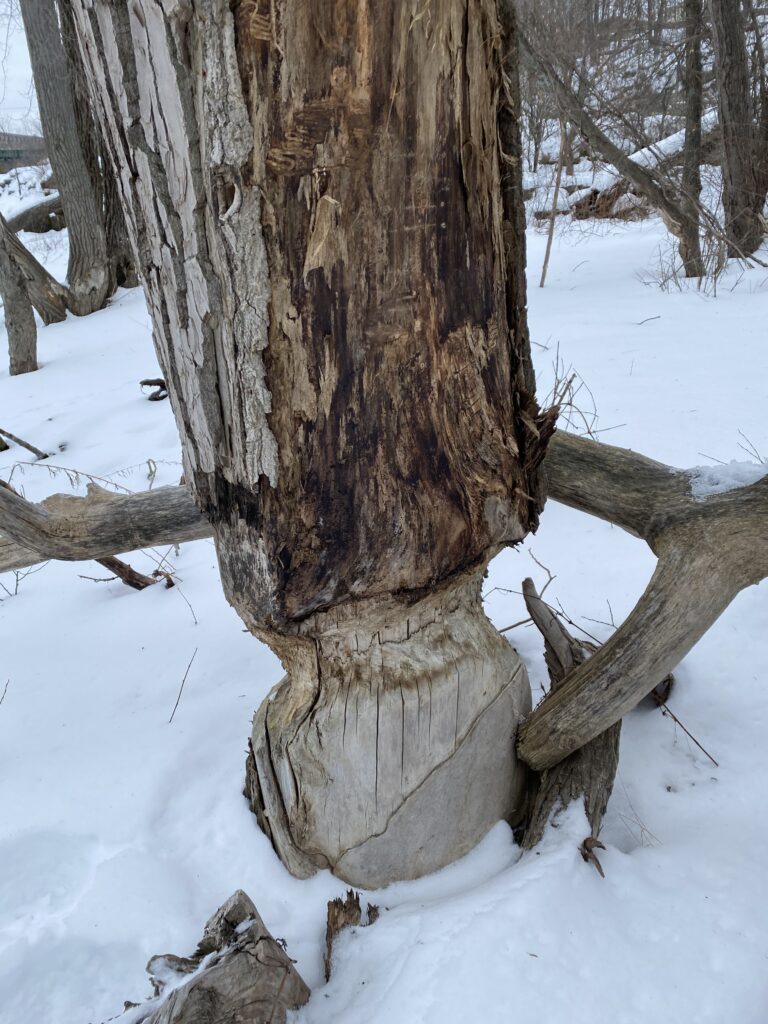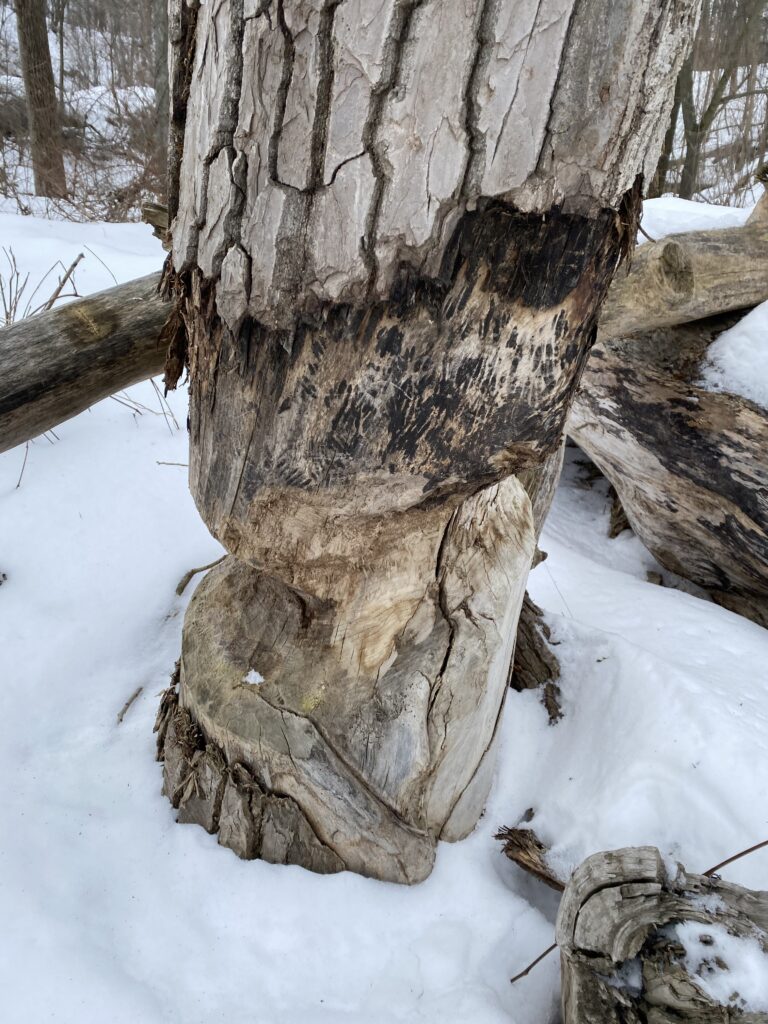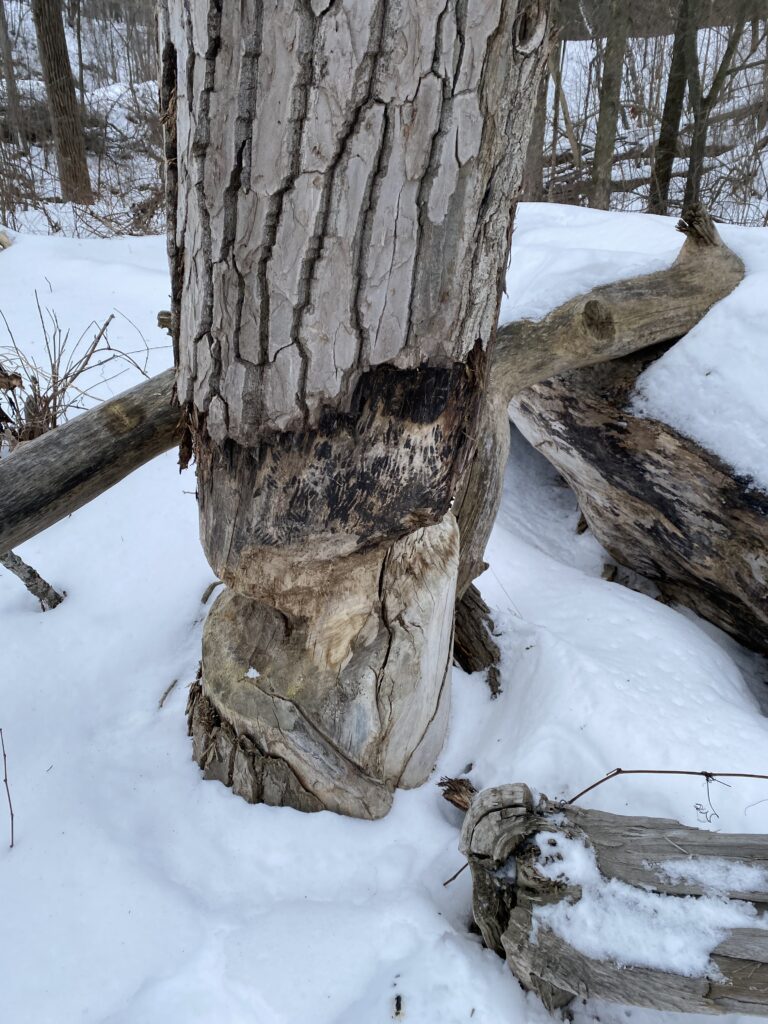Since my last visit to Salmon Hole on the Winooski, it’s clear that a host of changes have occurred in the landscape. Not only is there about of a foot of snow on the rocks and surrounding forest, but a portion of the river has also frozen over, a stark change from the last time I visited in early November when it was around 60°.
Aside from the usual rushing of the falls upstream, things have seemed to quiet down, as well. The only other sounds I heard were the calls of crows, who commonly gather to roost during the winter until breeding season begins in the spring. I also noticed many robins towards the beginning of the trail, a sign of the coming warm months. The other sign of wildlife I noticed were several different animal tracks. While it was often hard to decipher between dog prints and wildlife, I saw what appeared to be Grey squirrel tracks throughout the woods.
I also saw tracks that match those of a raccoon.
The final sign of wildlife I noticed was a tree that had been bitten down at its trunk. The project, which was likely the work of a beaver, has since been abandoned as the markings appear old.
Sources:
Eastern cottontail. (n.d.). Retrieved February 07, 2021, from https://vtfishandwildlife.com/learn-more/vermont-critters/mammals/eastern-cottontail
Holland, M., & Kaneko, C. (2019). Naturally curious: A photographic field guide and month-by-month journey through the fields, woods, and marshes of New England. North Pomfret, Vermont.: Trafalgar Square Books.
Levine, L., & Mitchell, M. (2008). Mammal tracks and scat: Life-size tracking guide. East Dummerston, VT: Heartwood Press.
McGowan, K., Dr. (2010, November 9). Frequently asked questions about crows. Retrieved February 07, 2021, from https://www.birds.cornell.edu/crows/crowfaq.htm#:~:text=For%20crows%2C%20roosts%20are%20primarily,roosts%2C%20even%20territorial%20breeding%20crows.
